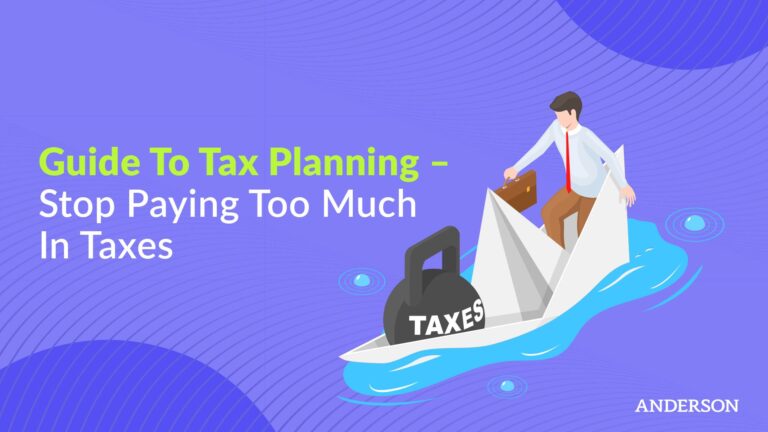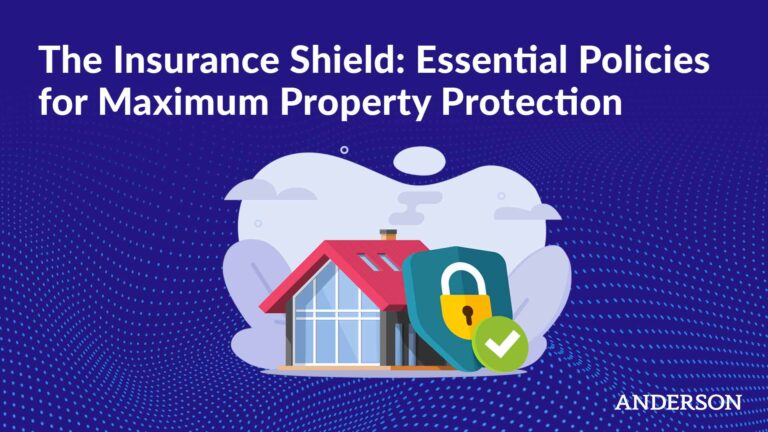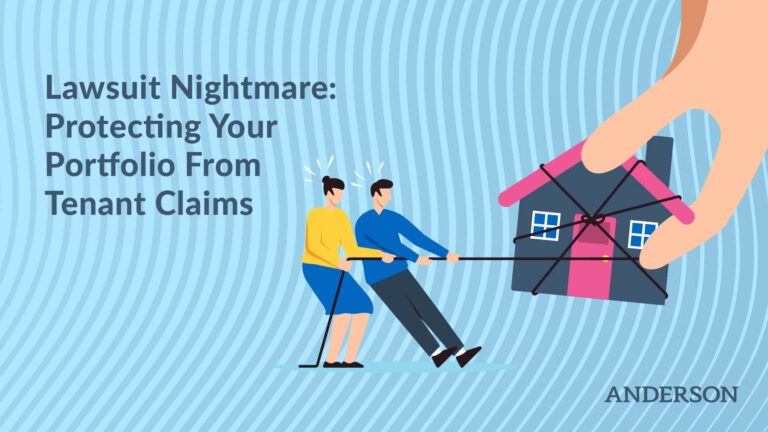Updated August 19, 2021
Investors have a wide range of choices when it comes to real estate investing. Those looking to diversify their portfolio may be considering income-producing real estate, such as multifamily housing. There are many benefits, including tax breaks and loan opportunities, that can make multi-unit rental investing a wise choice. Here are some key reasons why you should consider investing in a multifamily housing property:
8 Reasons to Invest in Multifamily Housing
- Increased Cash Flow
- Easier Property Management
- Multifamily Properties Hold Their Value
- Tax Breaks
- Live in One Unit and Rent the Rest
- Better Loan Opportunities
- Multifamily REITs
- Demand Projected to Increase
What is Multifamily Housing?
A multifamily residential property, also known as multifamily housing, refers to more than one housing unit contained in one building or group of buildings. This term includes a range of building types depending on the number of units involved, construction style, and amenities provided. Examples include duplexes, triplexes, quadplexes, apartment complexes, and townhomes.
Multifamily housing can be aimed at different markets, such as affordable housing for students, low-income residents, or luxury renters. Certain types of housing may also be eligible for government subsidies by performing certain renting activities, ranging from the Section-8 program to residential assisted living facilities.
Generally, when a property has four units or less it is considered residential property; otherwise, it is labeled a commercial property. How the property is zoned will determine the appropriate rental activity. The number of units will also impact the type of financing you will need and rate of return you might expect.
How to Buy Multifamily Property
Buying multifamily property is costlier than a single-family home, but the benefits are worth considering. First, you have to find the right property that aligns with your needs. Consider your financial goals, acceptable risk, and the property itself. Conduct due-diligence research and explore the local market by comparing other properties nearby. Drive around the neighborhood in both the day and evening to see how the local community appears to residents. Learn everything you can about the property in order to make the most informed decision possible. You don’t want to invest your money in an expensive multifamily home, only to discover later that your rate of return is lower than expected. It may be beneficial to consult with a real estate agent, preferably one with experience in multifamily housing and knowledge of the local area.
Once you have found a promising location, be sure to analyze the financial information. Start with revenue and expenses to determine the capitalization rate. Note the property condition, the number of current residents, and vacancy rate. Some lenders may not allow additional funding for rehabilitating the property. Lenders may wish to have a list of current assets and liabilities for the multifamily housing property. They also may ask for an appraisal, purchase contract, and even copies of current rental leases.
Once you have found the right investment property, you can look for a lender with the best rates. Depending on a variety of factors, you may be able to get a lower rate for multifamily housing loan than for a single-family home loan. This is especially useful for investors just getting started in the rental real estate market. Compare different lender rates and ensure that they are available in your area. Also, be sure to consider additional costs and fees like closing costs and carrying costs. Carrying costs refer to the expenses due regardless of rental income–such as utilities and taxes–and these costs are impacted by how long it takes to rehab a rental property.
Once you have obtained a pre-approval letter from your lender, it may be best to use the services of a local real estate agent to present the current owner with a purchase offer. The time it takes to negotiate a deal can vary greatly. Tenants may need to be notified that ownership is changing. Once an agreement has been reached and the lender has received all the contract forms and documents needed to approve the deal, you can work on closing the sale with the current property owners. You may be required to obtain different types of property insurance or landlord insurance. Before finalizing anything, consult with a professional advisor for advice on your specific situation. Once the details are settled the buyer and seller usually meet at the title company of their choosing to close the deal and obtain title insurance, if applicable.
1. Increased Cash Flow
A benefit of investing in multifamily housing is that these rental properties provide a steady monthly income. This cash flow comes from the tenants and is secured by a lease. The terms of a lease and the responsibilities of both the owner and tenants are set by state and federal regulations. The reasons that a tenant can break a lease are also limited to reasonable causes. This helps offer some security that rental properties will continue to provide rental income at a given occupancy rate.
Apartment buildings may have higher occupancy turnover, but they can better weather the impact of temporarily vacant units. Because of this, shorter lease options allow for a larger variety of renters. Short leases also provide the added benefit of being able to increase rental rates between leases as it becomes necessary. In addition to cash flow from rent, multifamily housing offers the opportunity to provide additional services for residents. Snack and drink vending machines and coin-operated laundry facilities can provide additional income. You may be able to contract an outside company to handle the operation and maintenance of these machines while collecting the additional cash flow. Other amenities can include pet deposits, pet fees, rental laundry machines, and even premium covered parking.
2. Easier Property Management
Managing many single-family homes brings complications. These issues can include requiring multiple property managers, insurance companies, and other obligations. Multifamily housing, on the other hand, groups all of your rental properties into one location which allows for easier and more efficient management and economies of scale. The impact of maintenance and repairs is also decreased. Renovation projects can benefit multiple units at the same time. This is because many of the units in a multifamily building share features such as walls, roofs, HVAC equipment, commons areas, parking, and roads.
Hiring a property manager is more affordable for a multifamily building due to increased cash flow potential. Often, they take a percentage of income and in return provide many services for the owner or investor. These are key services, such as finding and vetting tenants, handling rent collection, overseeing evictions, managing maintenance, and dealing with emergency situations. Finding an experienced and knowledgeable property manager can save an investor a lot of time and money. Best of all, while you collect passive income you can focus on your next investment.
3. Multifamily Properties Hold Their Value
Real estate values increase each year. The type of real estate investment you choose will impact the rate of your return. Rental properties offer monthly cash flow in addition to gradual increases in property value. Because of the high demand for affordable living units, the need for multifamily housing is projected to rise over the next few years. Plus, most of the improvements and cash flow amenities you put into the rental property will serve to increase its value.
Tenants are generally required to keep the rental unit in good condition, and they are responsible for any damages above normal wear and tear. Tenants guarantee this by way of a security deposit and owners can seek legal recourse if a renter refuses to pay for extraordinary damage they caused to the property.
Multifamily housing has also enjoyed low vacancy rates for a long time. According to the National Multifamily Housing Council, vacancy rates tend to range between 7% and 12% since 1975, with 2014-2017 boasting rates under 9%. As long as renting is an affordable and convenient alternative to home ownership, the value of rental properties will continue to hold. Rental rates have also increased each year at a standard growth rate.
4. Tax Breaks
New tax reforms have recently increased the possible benefits for real estate investors. Trump’s Tax Cuts and Jobs Act introduced a new deduction for qualified income that helps investors and owners of multifamily housing. First, the 20% deduction for qualified business income can apply to some rental properties, depending on the business type and income level of the taxpayer. Some choose to invest in real estate investment trusts, or REITs, which also benefit from this deduction.
The new deduction is limited to single filers earning under $157,500 and married joint filers earning less than $315,000. Be aware that for high-income taxpayers with rental property, the deduction is limited to 2.5% of the unadjusted basis of qualifying property.
A rental property also provides a bonus for some investors who benefit from the passive income. There are limitations for income to be classified as passive, such as how much time and effort you contribute towards the property each year. Passive income has much better tax treatment since you may not have to pay self-employment tax on that cash flow. Self-employment tax can deduct an additional 15.3% from income, with 12.4% going towards Social Security tax and 2.9% going towards Medicare tax.
Another provision of the tax reform keeps 1031 like-kind exchanges for real estate transfers, which allow for capital gains to be reinvested into a similar, more expensive property– without being taxed on the sale of the first property. This is a legal way to temporarily avoid paying tax on the capital gains earned when your property was sold for a profit. By reinvesting it into a more expensive property, you capitalize on the gains with a tax-free advantage freeing up more cash for that next purchase.
Rental properties can benefit from many other tax deductions. In some states, you may be eligible for a tax credit for energy efficiency improvements. Taxation is complex and can lead to trouble with the IRS if not done correctly. To ensure that you are getting all of the deductions and credits you qualify for, including the new ones allowed by the recent tax reform, consider seeking professional advice.

5. Live in One Unit and Rent the Rest
Investing in a multifamily home has the added benefit of providing a place for you to live. Depending on your investment goals, you may consider claiming one of the units for your family. This strategy is often used by investors looking for a way to get into real estate. Other renters contribute income towards the mortgage payments. As a resident of the property, you may be able to get an owner-occupied multifamily housing loan with reduced rates.
Personal liability is a concern to investors, but there are ways to manage risk and protect your investments. It’s a good idea (and probably a requirement) to obtain certain forms of insurance to protect the rental property you wish to buy. Do you already have a legal structure for your investment that limits your personal liability? This may include using a limited liability company, real estate investment trust, or another type of trust to hold the property. A limited liability company can help protect your other assets in the case of some lawsuits. There may be benefits of using a trust to protect your investment, including liability protection and possible tax advantages.
6. Better Loan Opportunities
Lenders perceive multi-family homes as sound investments because the risk is spread across the multiple units. The higher the number of units, the lower the impact a single vacancy has on monthly income. Vacancy rates can also be projected by considering nearby similar properties and the quality of the surrounding area. Multifamily properties also tend to hold their value. This is in part due to the income produced from renters. The National Multifamily Housing Council also stated that the average capitalization rate in 2017 was 5.6%. The capitalization rate of a property can be calculated quickly by dividing the net income by the total cost of the property. For example, a rental property that cost $4,500,000 and produces an annual income of $267,000 would have a capitalization rate of 5.9%. This method does not take into consideration every valuation factor; you may wish to consult with a professional to evaluate the property and actual capitalization rate.
Owner-occupied housing loans might be more favorable for investors which on average are 0.3% to 0.4% lower. Additionally, non-occupying owners may be required to produce a down payment of 20% to 25%. This is because an owner who lives in the rental has “skin in the game” and is taking on more of the risk. The number of units will also impact what type of loan you will want to get and what kind of financing is required.
7. Multifamily REITs
Investors who do not wish to manage rental property or be responsible for the liabilities involved may consider real estate investment trusts or REITs. These trusts allow people to invest in a real estate rental property. The rent income is then split between the owners based on their percentage of ownership.
Generally, REITs must pay out 90% of income to investors, and taxpayers benefit from the new 20% pass-through business deduction as well. In addition, self-employment tax may not be due on the rental income through REITs. This is a 15.3% savings opportunity on active real estate income. The investor is also separated from the management and responsibility for costs and debts. Instead of investing in an existing REIT, you can form your own or use a different trust type, such as a land trust, to manage the investment. This can provide many benefits, including keeping ownership and the sales price private.
8. Demand Projected to Increase
The demand for multifamily housing is projected to steadily increase over the next few years. This is due to a range of factors, including the renting habits of Millennials and Baby Boomers. Today, many people are foregoing home ownership in exchange for renting a home or apartment. For the elderly, a rental unit comes with decreased risk and costs associated with disasters, as well as most maintenance and repair needs. This translates to a steady expense for someone on fixed retirement income. Single-family homeownership incentives have also faltered recently, impacting loan availability and eligibility.
Multifamily housing has higher ownership costs compared to a single-family home but can provide better stability. Some lenders offer reduced rates for multifamily homes and apartment buildings. The National Apartment Association (NAA) shows mortgage rates at a 7 year high with additional increases expected in subsequent years, which will further drive people towards rentals. The NAA also expects higher occupancy rates for rentals, with some multi-family homes seeing 94% to 95% average occupancy, as well as a 2% to 3% average gain in rent growth.

Why Invest in Multifamily Housing
Multifamily housing offers many benefits. Carefully choosing the right property may provide a reasonable rate of return for an investment based on average capitalization rates. This is an excellent way to diversify your portfolio with a long-term, income-producing investment. In fact, income from rent is one of the main benefits, since it offsets the mortgage cost and provides steady monthly cash flow. Multifamily housing also benefits from simplified property management compared to owning multiple single-family homes. Investors can even hire experienced property management companies to handle the day to day details of the property, including finding and screening new tenants to fill vacancies and even handling evictions.
In addition to these benefits, multifamily housing and apartments hold their value over time with low vacancy rates and decreased impact from vacancies. The rate of return on multifamily property is generally above the rate a U.S. Treasury bond would yield over similar timeframes.
You may also qualify for many tax breaks when investing in a multifamily property. Recent tax reform allows 20% deductions for qualified business income. Investors with passive rental income may also avoid additional self-employment tax. Owners who live in one of their own units may also qualify for lower loan rates, along with other benefits.
Lenders generally consider multifamily housing as an acceptable investment because it holds its value well and produces income. Investors who do not wish to become rental real estate owners can instead invest in a real estate investment trust (REIT) which will pass along a share of income. Finally, demand is expected to increase due to revitalized interest in renting from both millennials and baby boomers.
Investing in large real estate property, such as a multifamily home, can be costly. To ensure you are making a smart deal and taking advantage of every tax break for your property, consider talking with a professional at Anderson Advisors today. Our team of experts can help ensure your investment is protected and even help set up a trust for the property. Reach out to us today for more information.
Free Strategy Session with an Anderson Advisor
Receive a detailed risk assessment to assist in lowering problem areas that could wipe out all of your assets with one wrong move. Speak with an Anderson Professional Advisor to get your FREE Strategy Session. Limited-Time Offer: FREE (a $750 value.)
3 Steps to Create an Invisible Investor Strategy
 The greatest mistake that people make when it comes to asset protection for real estate is not understanding the risks that are waiting out there for them. This eBook reveals the structure you should follow to ensure your hard earned money is protected from frivolous lawsuits and costly tax mistakes.
The greatest mistake that people make when it comes to asset protection for real estate is not understanding the risks that are waiting out there for them. This eBook reveals the structure you should follow to ensure your hard earned money is protected from frivolous lawsuits and costly tax mistakes.











